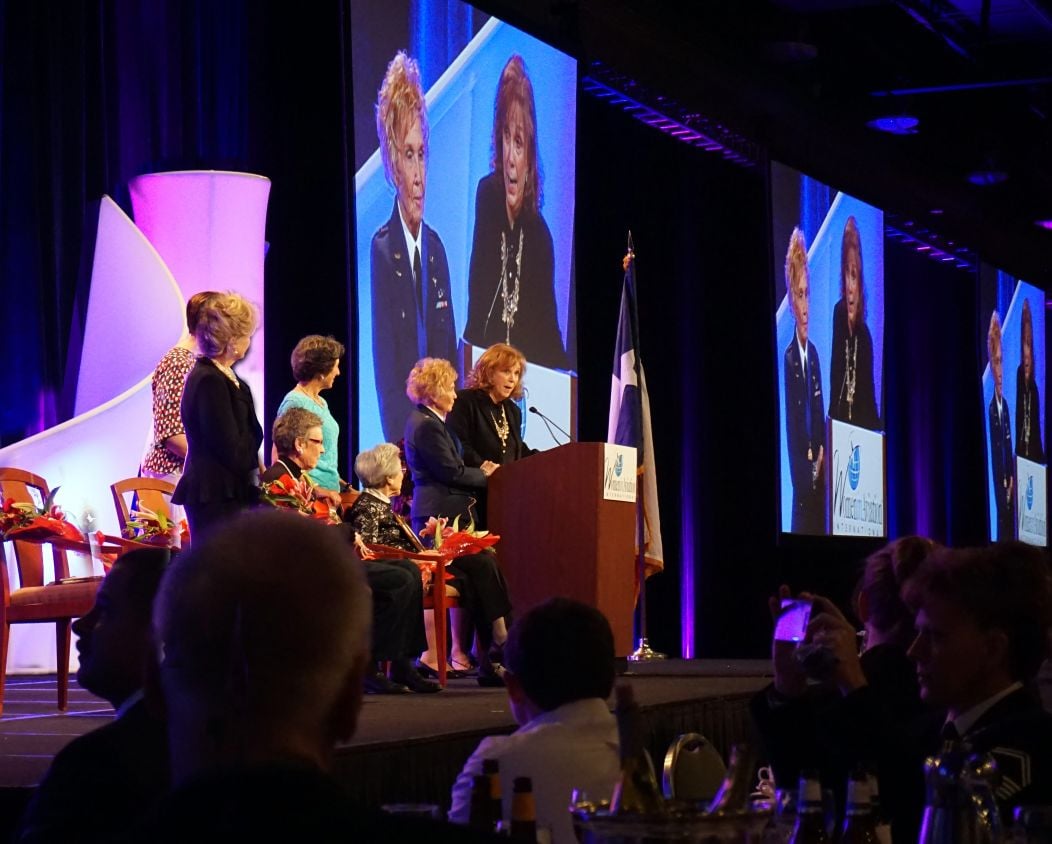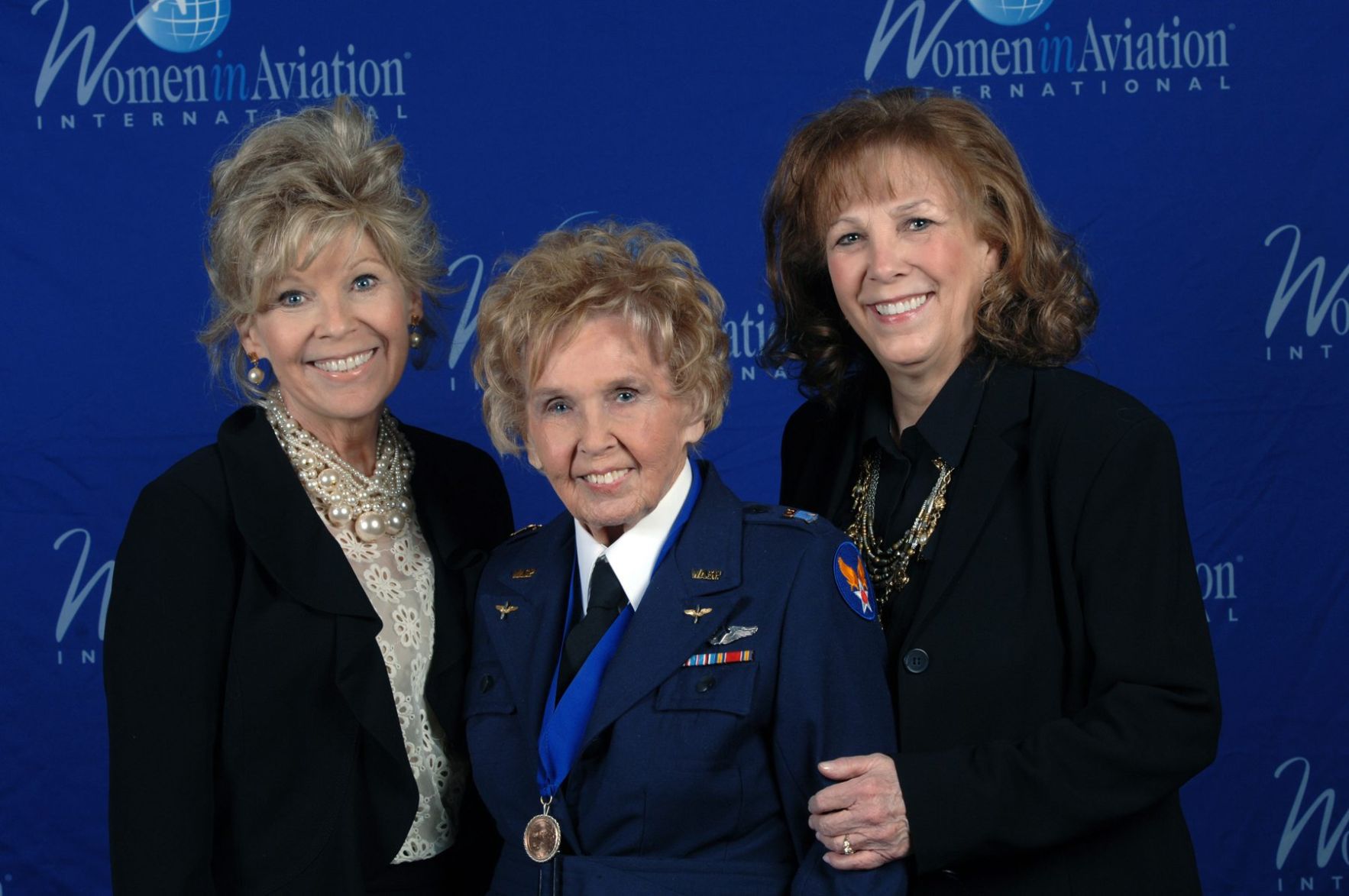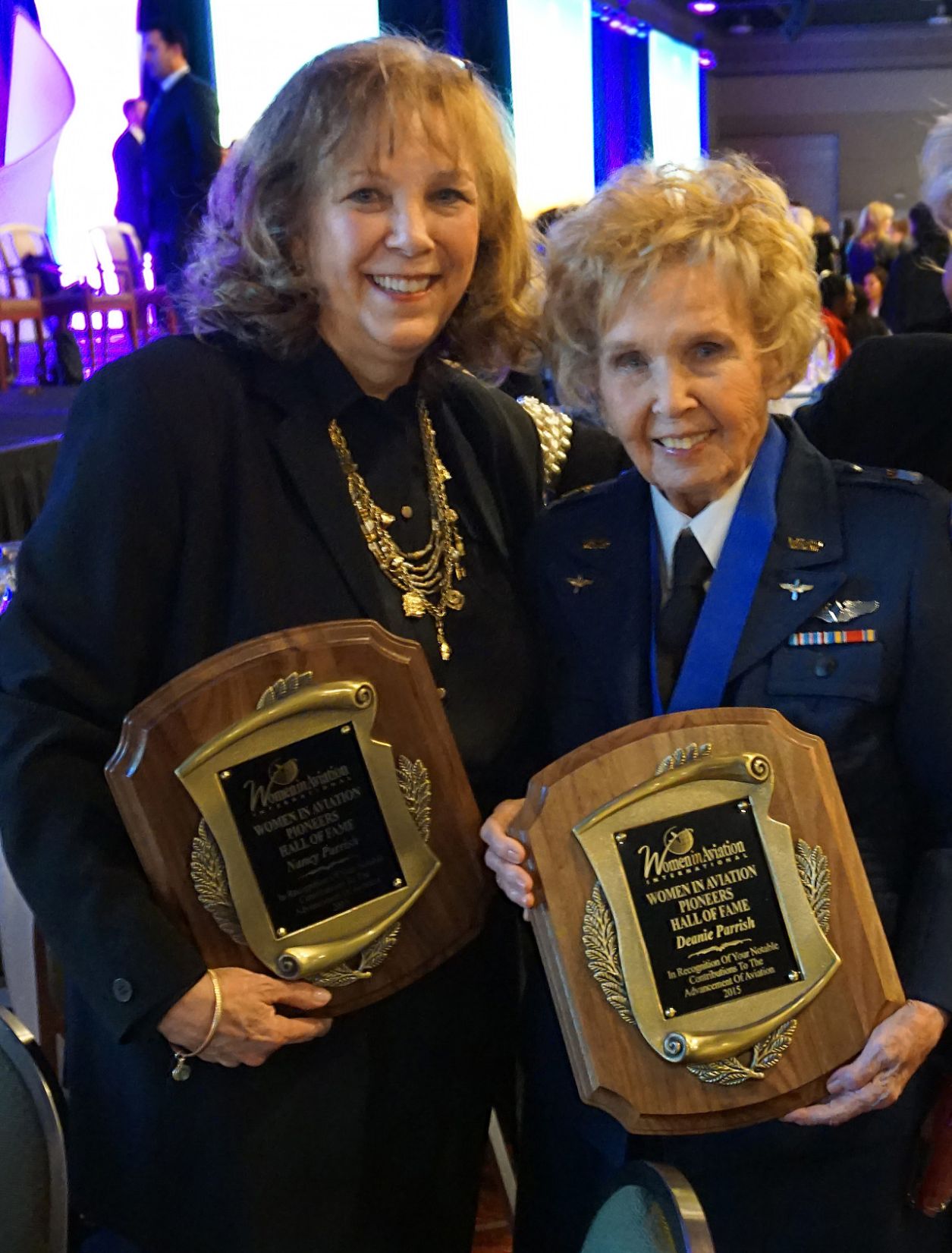F L Y I N G F O R
T H E A R M Y
A I R F O R C E
“B A C K W A R D S I N
H I G H H E E L S”
By Nancy Allyson Parrish
Director, Wings Across America
“Remember, Ginger Rogers did everything Fred
Astaire did,
but backwards and in high heels.” Faith
Whittlesey
_______________
Up until America was thrust into a raging World War
on December 7 of 1941, American women were not expected to do anything
particularly significant, important or courageous. Before that date, women were only expected to raise,
teach and take care of the men who would do the significant, important and
courageous. Women were expected to do
the housework, the cleaning and the dishwashing. Women were certainly not expected or
encouraged to go above and beyond in anything, much less fly airplanes for
their country.
World War
II changed all expectations. In fact, World
War II forever changed the role of women in America, including military
aviation. Why? With
American combat pilots in very short supply after severe losses in North
Africa, America desperately needed pilots—any kind of pilot! Even a woman.
All it took was one visionary, determined
pilot named Jacqueline Cochran who, in 1939, had written to First Lady Eleanor
Roosevelt and proposed the unconventional idea of ‘using women pilots’ in the
non combat roles. Add to Ms. Cochran one
desperate and open minded General named Hap Arnold. After she made several official proposals for
a program to give women pilots the same training as the male pilots, the
General finally gave her the opportunity to put her training program into
effect. That one decision eventually
gave America the untapped resource so badly needed: courageous, patriotic young
women pilots, committed to victory and willing to go where no woman had ever
gone before: the cockpit of an American military aircraft.
We all were patriotic, and we all wanted to serve our
country in some way. People just were
beating the doors down signing up for service, men, and, of course a lot of
women, too. And we were pulling together
in a way that I’ve never seen since then, and probably will never see again.
WASP Marion Hodgson, 43-W-5
With the Army Air Force’s
promise of militarization, the first class of 29 raised their right hands, swore
the oath and began Army Air Force flight training at the Municipal Airport in
Houston on Nov. 16, 1942. Three months later the training program was moved to
Avenger Field in Sweetwater, Texas. In
just over two years, a total of 1074 trainees took the same 'oath' all military
personnel take, completed seven months
of AAF flight training, graduated and, together with 28 WAFS (Women's Auxiliary
Ferrying Service) became WASP, Women Airforce Service Pilots, the first women
in history to fly America's military aircraft.
We worked like dogs in dirty,
greasy coveralls. We had to break down
an engine, we had some tough ground school classes, but oh, the flying was so
wonderful. WASP Doris
Tanner, 44-W-4
From the
first day of training to the day the WASP hung up their Army parachutes for the
last time, everything the women pilots did was scrutinized, measured and
recorded. Their health, weight,
strength, skill, stamina, patience and perseverance were tested. Every
time a WASP stepped into a new kind of aircraft, or flew a new kind of mission,
it was a groundbreaking experiment on behalf of all women pilots. As every WASP
knew, if one WASP failed, the whole program would be at risk.
CO of
Flight Operations, Camp Davis took a very dim view of women in the military and
especially those flying airplanes. His welcoming words were, "Both you and
these planes are expendable. Either accept that fact or pack up and go
home." 2 WASP were killed at Camp
Davis. WASP Marion Hanrahan, 43-W-3
The WASP DID NOT FAIL. In fact, they EXCEEDED
beyond all expectations. In two years,
at 120 air bases across America, WASP flew over 60 million miles, in every type
aircraft and on every type mission any male AAF pilot flew, except combat. WASP attended Pursuit School and Officer
Candidate School. They flew strafing, night tracking and smoke laying missions.
They towed targets for air-to-air and ground-to-air gunnery practice, with
gunnery recruits firing live ammunition. They ferried planes and transported cargo,
personnel and parts of the atomic bomb. They instructed, flew weather
missions and test flew repaired aircraft. WASP
even flew aircraft that male pilots refused to fly, including the B-26
"Widow Maker" and the B-29 "Super Fortress," to prove to
the male pilots they were safe to fly.
When we landed at Dodge City, the
sergeant that met us drove us by what he called, ‘the bone yard’—four B-26s had
‘cracked up’ within the previous month, killing the entire crews. And he said, ‘If you girls have any sense,
you’ll turn right around and go back where you came from, because that thing is
a killer.’ Well, of course, we didn’t do
that. And the
Commanding Officer said, ‘if you stay, and if you pass, you will be the first
women in the history of the Air Force to fly a bomber.’ So he left the room for us to talk it
over. And, of course, we all wanted to
fly it. WASP Sandy Thompson, 43-W-5
They flew with an
unwavering urgency and a passion for their mission: to free male pilots
for combat. WASP not only passed every test, they
outscored their male counterparts.
They had
so many airplanes and so few pilots. We
were just as busy as we could be all the time.
Just every time they came in, they’d have another airplane for you. My favorite? The P-63. It was
quite an airplane. I just loved it. I flew as many as I could, as far as I could,
as fast as I could. WASP
Betty Fernandes, 43-W-3
Thirty-eight WASP were
killed flying for their country. Because they were officially civilians,
their bodies were sent home in cheap pine boxes, their burial at the expense of
their family or classmates. These heroic pilots were denied any military
benefits or honors – no gold star allowed in their parents' window, no American
flag for their coffins.
You either had a chance of doing it or go
home. Those who wanted transfers went home! We did what we were assigned
to do...with no regrets! WASP Ruth Thomason Florey, 43-W-4
Three weeks before a
44-W-4 trainee was to graduate, her mother received an official telegram from
the country her daughter so proudly served. It simply said: "Your daughter
was killed this morning. Where do you want us to ship the
body?"
On Dec.
7, 1944, in a speech to the last graduating class of WASP, General Arnold said,
“You and more than 900 of your sisters have shown you can fly wingtip to
wingtip with your brothers. I salute you…We of the Army Air Force are proud of
you. We will never forget out debt to you."
With official orders ‘not to
talk about their training or what they were doing,” the WASP stood helplessly
by as General Arnold's request to
militarize the women pilots was defeated in the Congress. On December 20, 1944, when victory seemed certain,
the WASP were quietly and unceremoniously disbanded. There were no benefits and
few ‘thank-yous’. They hung up their
parachutes and paid their way back home. Their military records were classified
“confidential” and filed away in government archives, where they remained,
unopened, for the next 33 years, unavailable to historians who wrote the
official accounts of WWII. The AAF did forget -- and so did America.
In November, 1977, under the leadership of General Arnold's son,
Col. Bruce Arnold, USAF Ret., surviving WASP, and Senator Barry Goldwater,
Congress narrowly voted to give WASP the Veteran status they had earned. WASP
were not even invited to the bill signing. Their medals came in the mail.
I think that’s important for young people
today to realize that there were people before them that did things that were
dangerous…but in order for this country to be free, that’s what it took. And they did it without question. WASP Deanie Parrish, 44-W-4
It has been over 65 years since the WASP blazed
their trail, but the history remains inspirational. Backwards in high heels? Not exactly. But, with a slight nod to the beautiful Ginger
Rogers who danced the exact same steps as Fred Astaire, the WASP completed the
same training, flew the same planes and the same missions. They did everything their country asked and
more. They paid their way to serve
their country, paid to bury their fallen comarades, and they paid their own way
back home.
They never expected anything—except to FLY for
their country, and that they did, with honor, integrity, courage, sacrifice,
commitment, faith and patriotism.

































